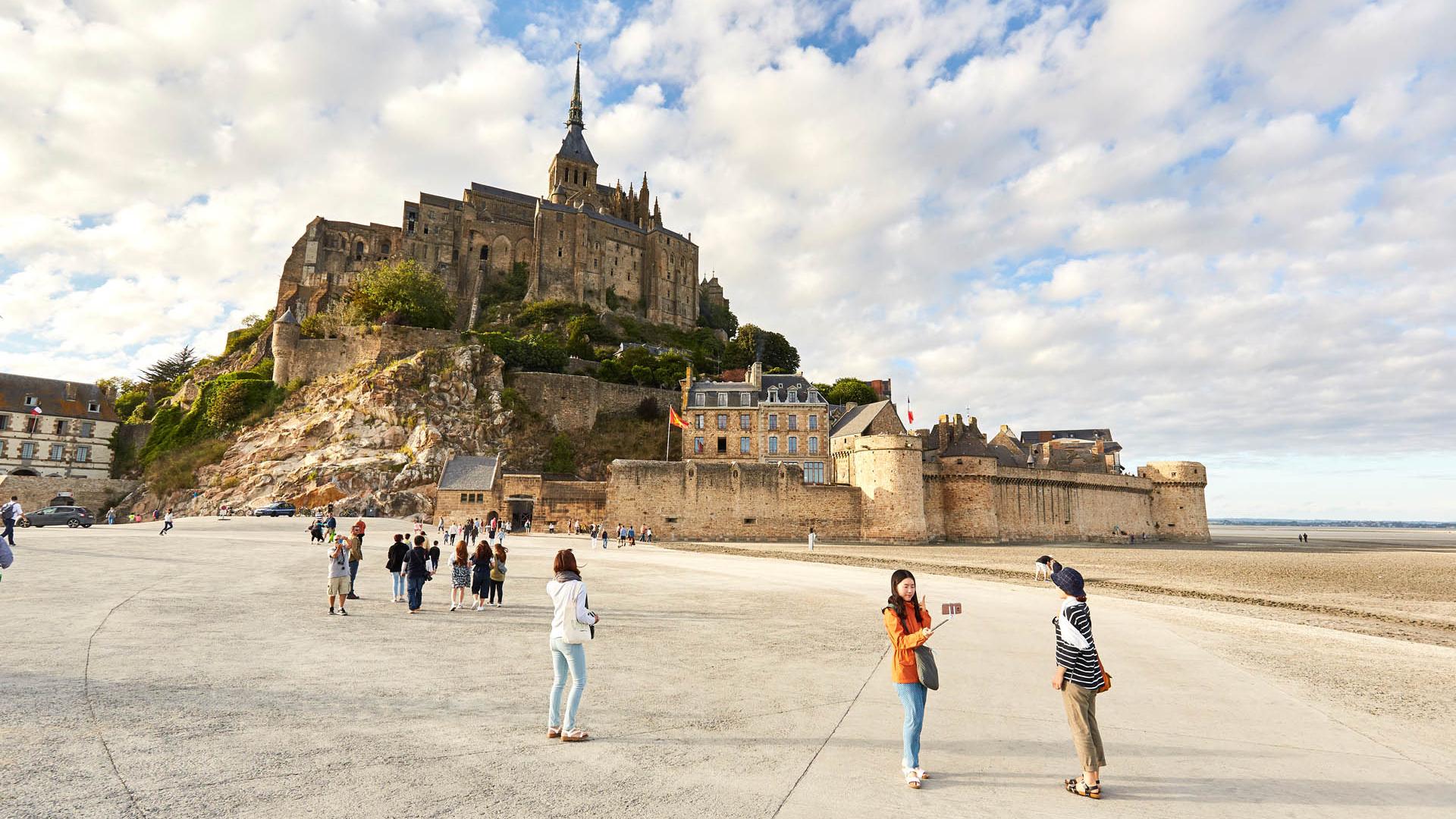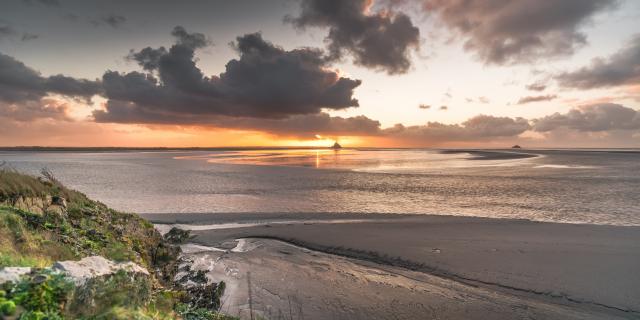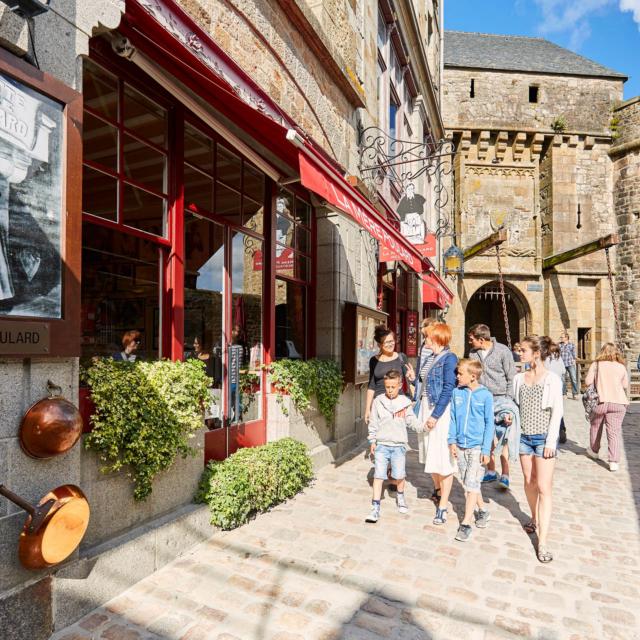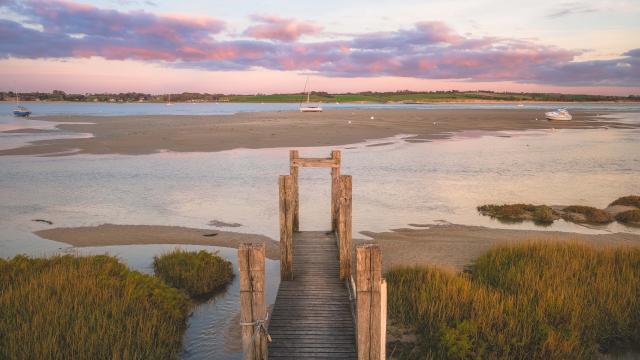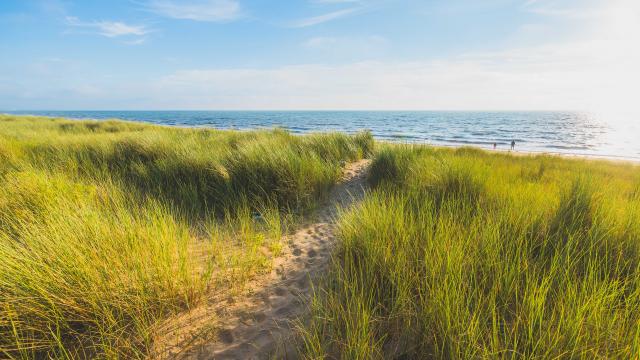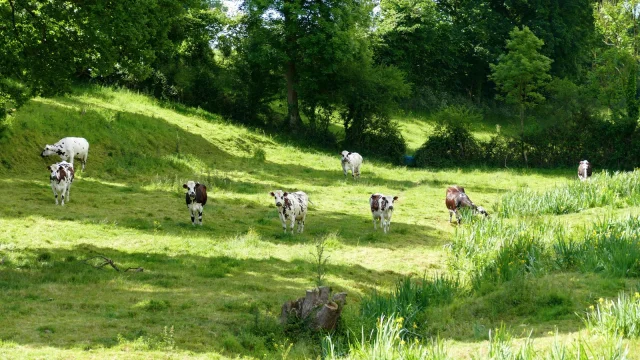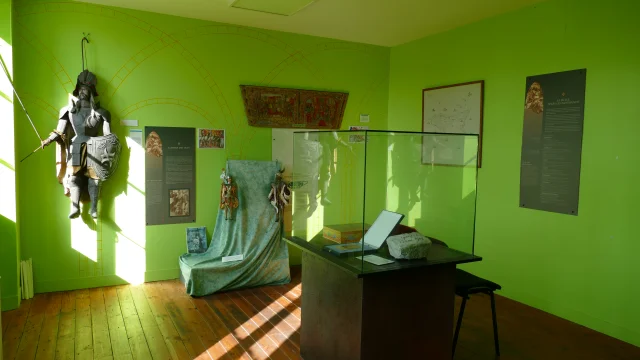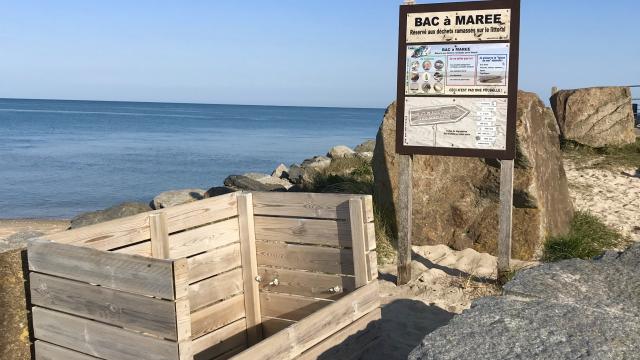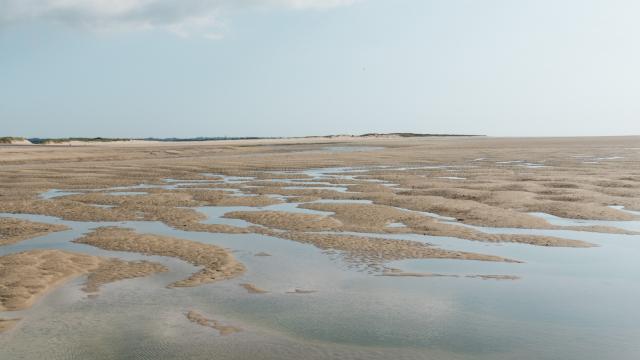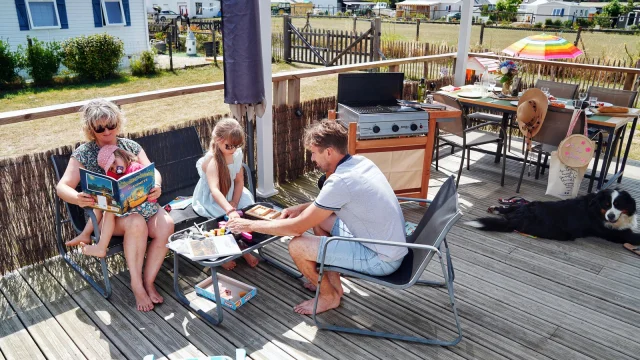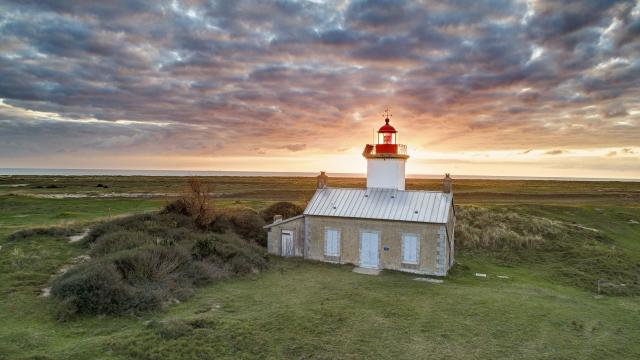 A series of stone steps lead to the entrance of a medieval castle. Several visitors are climbing the steps. The castle is made of stone with round towers and flags flying at the top. The castle walls are thick and sturdy, with narrow windows. The sky is partially cloudy with patches of blue.
A series of stone steps lead to the entrance of a medieval castle. Several visitors are climbing the steps. The castle is made of stone with round towers and flags flying at the top. The castle walls are thick and sturdy, with narrow windows. The sky is partially cloudy with patches of blue.The Abbey: not to be missed!
Bishop Aubert of Avranches founded the first sanctuary in 708 in honour of the Archangel Michael. At the time, the rocky islet was not yet called Mont-Saint-Michel, but Mont-Tombe. Towards the end of the 10th century, the sanctuary was transformed into a Benedictine abbey. Over the centuries, the abbey evolved into a fortress abbey. Several different architectural styles can be seen. When visiting the abbey, there are several places of interest that are a must-see:
- The statue of Saint-Michel: depicting the battle of the archangel Michael slaying a dragon. It is over 4.50 metres high, weighs more than 500 kg and is perched 156 metres above the sea.
- The cloister: built in the early 13th century, it has magnificent decorated arcades. A large window on the outside offers a breathtaking view of the bay. At the heart of the cloister is a garden that was rebuilt in 1966 by a Benedictine monk.
- The Knights’ Room: built at the same time as the cloister, this sober but magnificent room with its arcades was used by the monks to copy manuscripts.
- As its name suggests, the Salle des Hôtes: the abbey’s reception room.
- Notre-Dame-sous-Terre: the abbey’s original abbey church, located in the lower part of the abbey. Accessible only during guided tours on Heritage Days, for example.
- The abbey church: built in the 11th century, it replaced the first church built on the Mont. It is 70 metres long, and at its highest point, under the choir vault, it is 25 metres high.
In summer, you can also visit the Abbey by night, with a musical ambience that adds to the magic of the tour.
